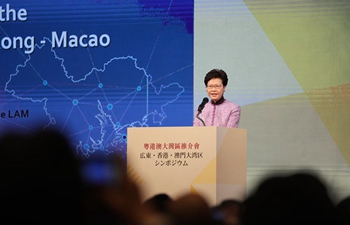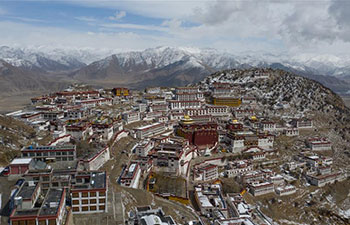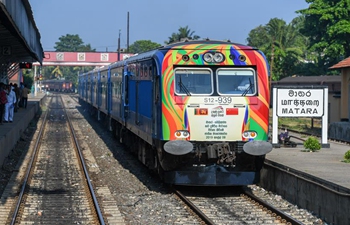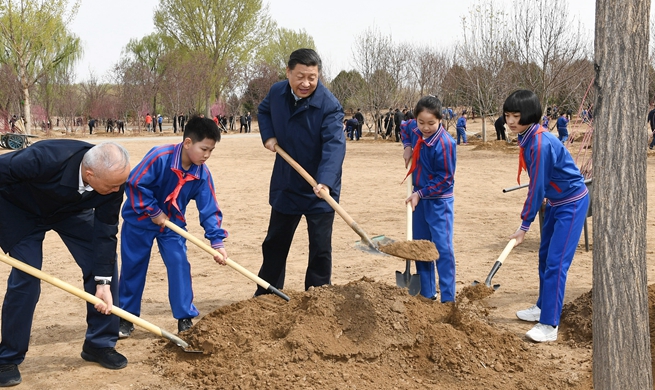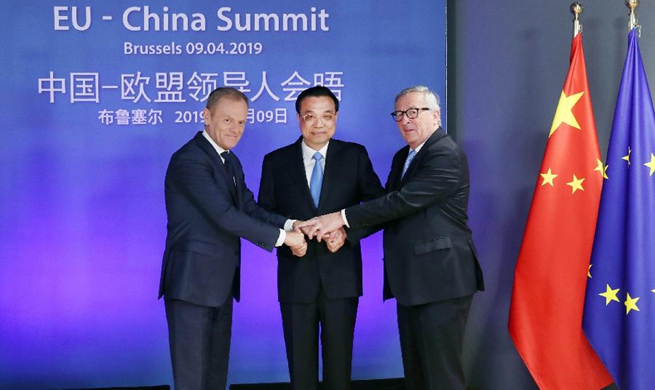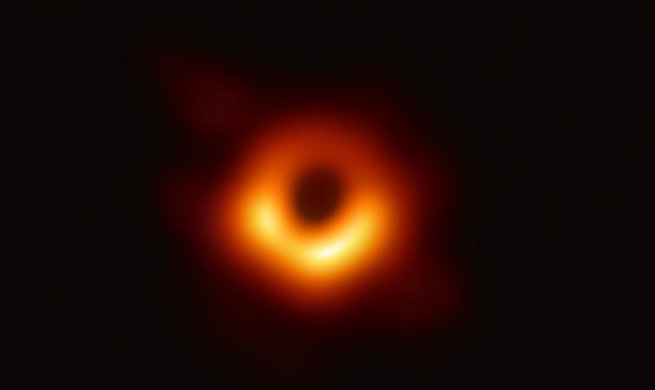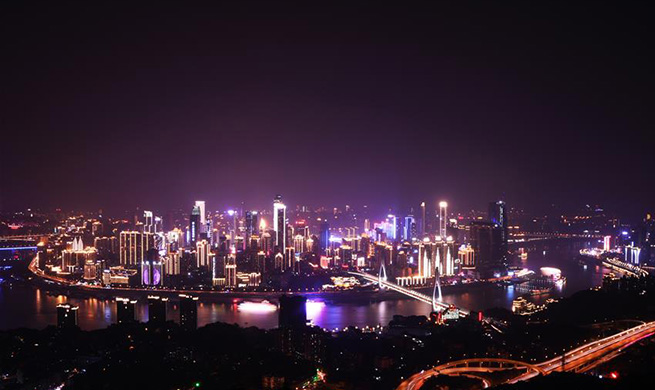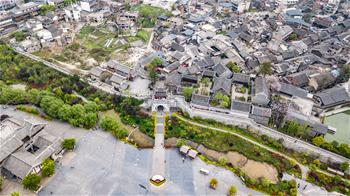TOKYO, April 10 (Xinhua) -- Japan confirmed on Wednesday that one of its locally assembled F-35A stealth fighters crashing the previous day marked the first such accident in the world for the jet.
Japan's Defense Ministry told ruling Liberal Democratic Party (LDP) lawmakers that the crash in waters off Japan's northeast was the first of an F-35A anywhere in the world.
The crash has also sparked concerns over the Japanese government's plans to buy 105 more of the 100-million-dollar fighters as it seeks to overhaul its aged fleet of mainstay jets as part of its controversial national defense guidelines.
The Japanese F-35A fighter jet, some wreckage of which has been found in the Pacific Ocean off the coast Aomori Prefecture, was on an air-to-air training mission and took off from Misawa Air Base in Japan's northeast at around 7 p.m. on Tuesday evening, according to the Defense Ministry.
It was flying off the coast of Aomori Prefecture about 135 km east of the base when radar contact was lost less than 30 minutes after takeoff, the ministry said.
Japan's Defense Minister Takeshi Iwaya said the pilot, a major in his 40s who was flying the single-seat jet when it went missing and is still unaccounted for, radioed the three other pilots involved in the exercise comprising four F-35As, to abort the mission.
The other pilots could not see the major's plane as it was dark, defense ministry officials said, and the planes were not flying close to each other during the combat drill.
A Japanese Air Self-Defense Force (ASDF) team looking into the the cause of the accident said it suspects the pilot, who had logged 3,200 hours of flying time including around 60 hours specifically flying F-35As, may have noticed some kind of abnormality before the plane crashed.
The plane itself was less than one year old and had clocked only 280 hours in the air, the Defense Ministry said. The plane's black box will be hard to retrieve, officials said, as the plane crashed in waters around 1,500 meters deep.
Following the crash, a world first for an F-35A although an F-35B crashed near a U.S. Marine Corps base in South Carolina in September with the pilot ejecting to safety, the remaining 12 F-35As deployed at the Misawa base here have been grounded.
A new F-35 squadron has been formed at the base with 80 personnel and the Japanese government plans to bolster its fleet of 5th generation multi-role stealth fighters with the acquisition of a total of 105 F-35As and 42 of the short take-off variant F-35B stealth fighters.
The jets, the Pentagon's most sophisticated 5th generation multi-role stealth fighters and most expensive weapons system, is supposed to replace Japan's fleet of F-15 and aging F-4 fighter planes.
The 5th generation jets are co-developed by nine countries including the United States, Britain and Italy and are produced by the U.S. defense company Lockheed Martin Corp.
The jet that crashed Tuesday, however, was assembled at Japan's Mitsubishi Heavy Industries Ltd.'s plant in Aichi Prefecture. It was the first time Japan had been involved in the production process of the 5th generation multi-role fighter.
The crash of the jet which has a price tag of between 80 and more than 100 million U.S. dollars and costs around 50,000 U.S. dollars per hour to fly, while possibly not completely scuppering the government's planned acquisition, will certainly dent its plans to achieve air-defense superiority, as per its national defense guidelines, military analysts here said.
Experts on the matter have also said that the crash will add to ongoing controversies regarding Japan's ever-increasing defense spending and contentious plans connected to its national defense guidelines.
At the heart of recent controversies and currently outlined in the defense guidelines covering a period from fiscal 2019, is the planned upgrading of the Izumo-class helicopter carrier to enable it to transport and launch the F-35B multi-role stealth fighters the government plans to acquire.
"We will refit Maritime Self-Defense Force multipurpose helicopter destroyers so fighter jets capable of short takeoffs and vertical landings can be deployed when necessary," the government said in its mid-term defense program, in stark contrast to previous assertions that the helicopter destroyers were not "defacto" aircraft carriers.
The defense guidelines, to appease a concerned public, maintain that the retrofitting of the Izumo helicopter carrier to be able to carry and launch F-35Bs, among other aircraft, is not so Japan can posses an attack aircraft carry and hence is not in breach of Japan's Supreme Law which prohibits such weapons systems.
Defense analysts have pointed out, however, that under Japan's Constitution, Article 9 of which reads... " land, sea, and air forces, as well as other war potential, will never be maintained," means upgrading the Izumo-class of helicopter carriers into contemporary "de facto" aircraft carriers, whether it permanently carries 5th generation fighter jets or not, is in contradiction of Japan's pacifist charter.
Japan's opposition parties have taken aim at the government's constitutionally dubious maritime and air force plans for being in excess of the country's defensive needs.
Defense experts here have also voiced caution that the plans could act as a legitimate catalyst for the buildup of military assets in neighboring countries.


